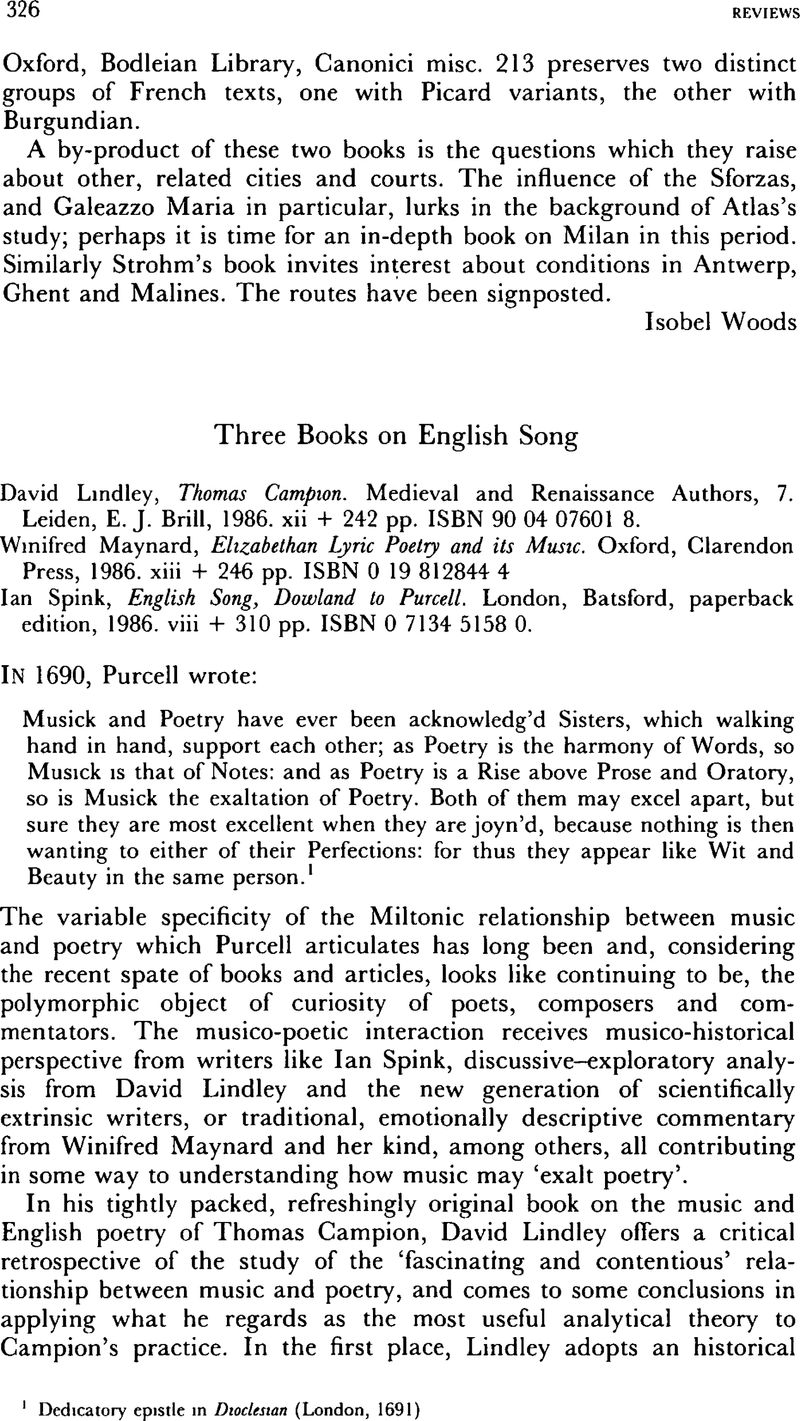No CrossRef data available.
Published online by Cambridge University Press: 01 January 2020

1 Dedicatory epistle in Dioclesian (London, 1691)Google Scholar
2 See, for example, Miles Merwin Kastendieck, England’s Musical Poet (New York, 1938) and Maynard, Elizabethan Lyric Poetry, 96-112.Google Scholar
3 Susanne Κ Langer, Feeling and Form (London, 1953) - misquoted as 1963 by Lindley See also Langer, Problems of Art (New York, 1957).Google Scholar
4 Jack M Stein, Poem and Music in the German Lied from Gluck to Hugo Wolf (Harvard, 1971), PrefaceGoogle Scholar
5 Nicolas Ruwet, ‘Fonction de la parole dans la musique vocale’, in Langage, Musique, Poésie (Paris, 1972), 55Google Scholar
6 Bruce Pattison, Music and Poetry of the English Renaissance (2nd edn, London, 1970), 142, quoted by Lindley, p 131.Google Scholar
7 Louise Schleiner, The Living Lyre in English Verse (Missouri, 1984), 8-9.Google Scholar
8 Schleiner, The Living Lyre, 7Google Scholar
9 V C Clinton-Baddeley, Words for Music (Cambridge, 1941), 71-3Google Scholar
10 Rosemond Tuve, Elizabethan and Metaphysical Imagery (Chicago, 1947)Google Scholar
11 See Northrop Frye, ‘Music in Poetry’, University of Toronto Quarterly, 11 (1941-2), 167-79, summarized in Frye, ‘Introduction. Lexis and Melos’, Sound and Poetry (New York, 1957), ix-xxvii.Google Scholar
12 The pros and cons in adopting a traditional prosodical approach are articulated by Derek Attridge, The Rhythms of English Poetry (London, 1982), 3-18 This is by far the best book on poetic rhythm, and one which Maynard ignores - probably not by choice.Google Scholar
13 See David Crystal, Prosodic Systems and Intonation in English (Cambridge, 1969) and ‘Intonation and Metrical Theory’, The English Tone of Voue (London, 1975), 105-24Google Scholar
14 Elise B Jorgens, The Well-Tun’d Word Musical Interpretations of English Poetry, 1597-1651 (Minnesota, 1982)Google Scholar
15 Schieiner, The Living LyreGoogle Scholar
16 Vincent Duckies, ‘English Song and the Challenge of Italian Monody’, Words to Music (Los Angeles, 1967), 3-4Google Scholar